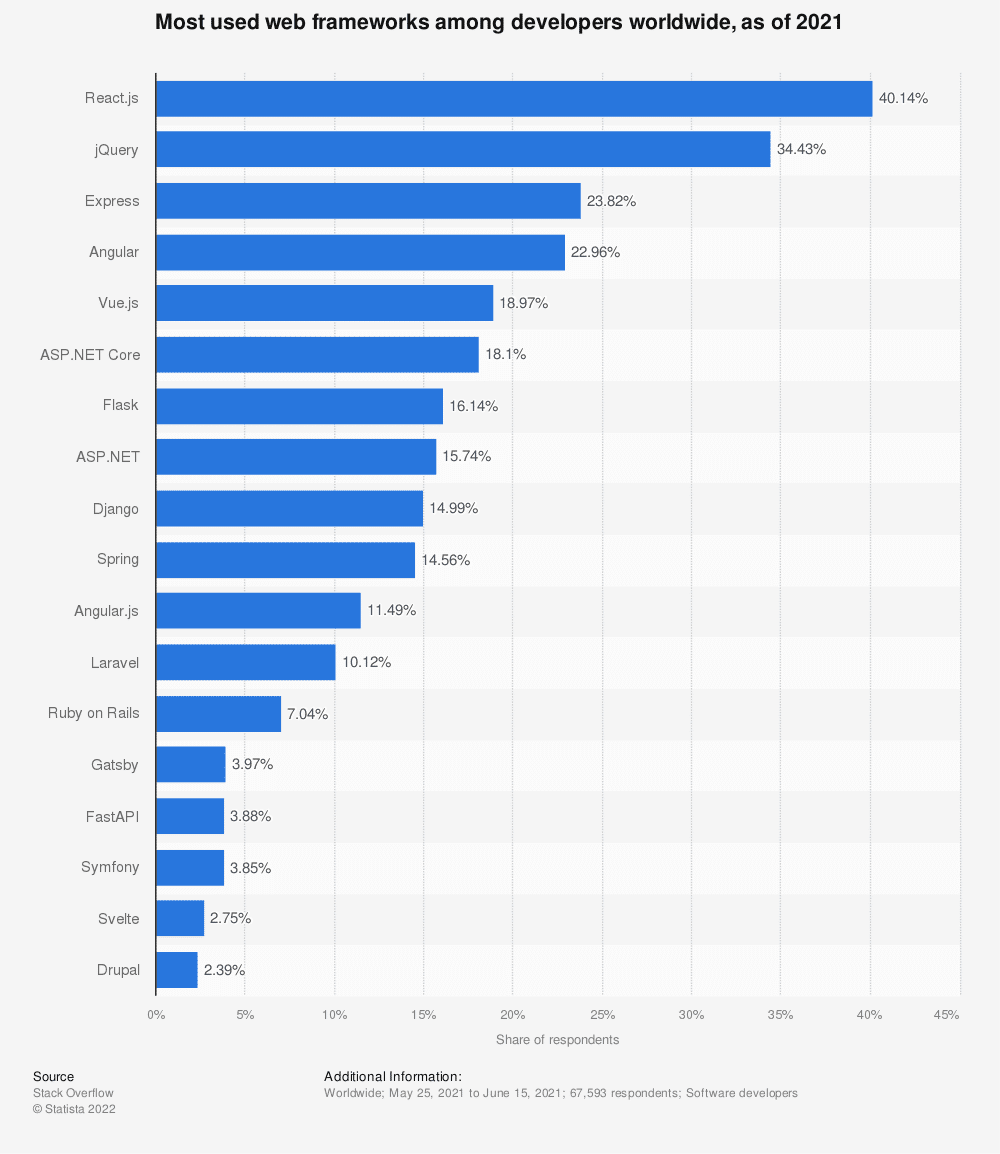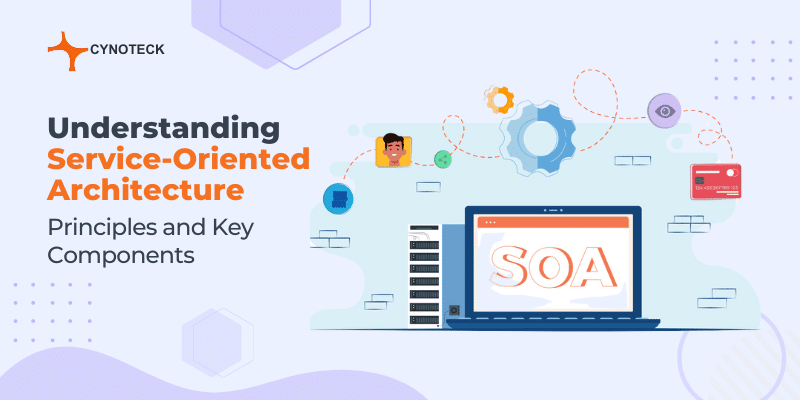Selecting the suitable technology stack before planning any kind of development whether Web or App is one of the most important and difficult processes that software developers, start-ups, and businesses have to go through. It is just like when building a new house, you utilize different “building materials”, the same goes with your digital product development, you use different tools to create functional applications and websites.
Choosing what tech stack to use usually comes before development occurs. There are many options available for web and app development. But you need to keep in mind that if you are a non-technical person, a false step in selecting the right tech stack for the application can lead to unfortunate consequences.
Having a clear understanding of the technology stack will help you develop a customer-centric website that targets the audience effectively and executes all the plans with perfection. Investing in any latest technology is generally a shared decision between senior engineers and developers and the chief technology officer (CTO).
It helps you to upscale your process of website development and ensure that the product offers the best performance for which it was designed.
What is a technology stack?
A tech stack is defined as a set of technologies, programming languages, frameworks, and libraries used to create a mobile or web app. It is a mixture of servers, UI/UX solutions, software, and tools employed by developers.
Here are some of the most popular languages used for development: Ruby, Python, React, Swift, JS, WordPress, PHP, AngularJS, Flutter, C++, MongoDB, Node.js, Apache, etc.
You can create a tech stack or multiple tech stacks that promote the growth of your whole organization. Technology stack is furthermore used for a variety of reasons, from digital marketing and sales to analytics and human resources.
The most successful tech stack help facilitate all of your processes and support your team in increasing efficiency. As a result, you may see progress in your bottom line soon after the implementation.
Also, read: Top KPI for Software Development and Engineer Teams: The Client Perspective
Why is technology stack important?
A technology stack plays a very important role in the development, it is the underlying infrastructure construction block of any software application. These are the languages, frameworks, and other third-party software products that the application is created on.
Selecting the right tech stack is one of the most crucial decisions when constructing a software product. Having the right technology at the place can make you come out of any challenge or difficulty that you confront in your way.
It affects the scalability in terms of performance, it furthermore provides agility and flexibility on product design and development, reduces development cycles, and attracts and maintains talent.
The capability to scale quickly depends on multiple factors but having the right tech stack is the most important one. So, you need to make sure to choose the technology stack very wisely.
Differences Between Web and Mobile Apps Tech Stacks
In the case of web apps, a user interacts with the product through the browser, making it possible to create a multi-channel app that interacts with an assortment of target platforms.
There are a ton of options for your web app tech stack. To get better decision-making, several organizations also pursue best practice combinations of technology stacks.
On the other hand, in the case of mobile apps, a user needs to download an application to their device. This presents new requirements on the tech stack regarding the frameworks, programming languages, and other technologies needed to support the mobile app on the targeted platforms.
This drastically decreases the number of choices; it also requires new considerations for the tech stack.
1) Multi-Channel / Multi-Platform Functionality
Mobile apps are required to be purpose-built for individual platforms (native apps) or designed using a cross-platform strategy. On the other hand, responsive web apps can be viewed across any browser, providing cross-platform accessibility at a fraction of the time and cost of native apps.
Cross-platform and native mobile apps have the advantage of offline availability, improved performance, and can integrate additional native device features.
2) API Integration
An API (application programming interface) is a protocol to access other platforms or applications. For instance, web and multiple mobile apps leverage social identities (Apple ID, Facebook) through API to support login.
3) Core Smartphone Services
Customers hope that their mobile apps should support the basic functionalities of their devices such as push notifications, geolocation, certification, authentication and token management, and other offline synchronization.
Developers can create a backend that can power both the mobile and web apps, most commonly utilizing RESTful API. This is beneficial for organizations that maintain multiple web apps and native apps that all access the same database, for example – Netflix.
These are the three demonstrations of how a web app and mobile app can differ.
Also, read: Model-Based Testing: The new era of Software Automation
Front-End and Back-End Technology Stack: Understanding the Concepts

Front-End Tech Stack (Client-Side)
The front-end is what faces the client, it is constructed of all the components that go into that visual representation on the mobile device or web browser. So, it is important to think beyond just the surface-level design.
The front-end includes the use of three programming languages:
1) JavaScript – JavaScript is used to support interactivity, complex features, or complex functions.
2) HTML (Hypertext Mark-up Language) – HTML offers the structure for how the app or website will be displayed.
3) CSS (Cascading Style Sheets) – CSS is utilized to support basic style elements such as fonts, layout, colours, and other essential response features.
4) Front-End Frameworks
Frontend frameworks offer basic templates and elements of CSS, HTML, and JavaScript for creating web apps and websites. JavaScript is extremely versatile for facilitating complicated integrations for user-friendly results and providing an exceptional digital experience.
Back-End Tech Stack (Server-Side)
The back-end tech stack is server-side, it refers to everything that lives on the server “behind” what is seen, the backbone of the website or app, the inside workings.
The backend tech stack includes the following elements:
1) Server-Side Programming Languages
Server-side languages like Objective-C, Python, PHP, Kotlin, Swift, JavaScript, Ruby, C#, C++, and Dart.
2) Server-Side Frameworks
Common server-side web application frameworks comprise the following:
- Ruby on Rails (Ruby)
- React Native (JavaScript)
- Flask (Python)
- Django (Python)
- Laravel (PHP)
3) Web Server
Common back-end web servers include Nginx, Apache, and IIS.
4) Databases
Some common databases include MySQL, MongoDB, etc.
5) Operating System
Some common OS options are Mac OS, Windows, iOS, Android, and Linux.
Also, read: Top Web app development frameworks for 2022: get the most scalability at lower costs
Examples of Android and iOS Tech Stacks
Whether you plan to get into native iOS or Android mobile app development, you need have to look at a whole different set of tools or technology stack for these two platforms. Now let’s take a look at the different tech stacks used:
For Android Mobile Apps:
1) Java, Kotlin – Programming Languages
Java and Kotlin are two of the best programming languages for native mobile application development. Java has some restrictions that delay Android API design while Kotlin was developed particularly to overcome these drawbacks and is inherently clean, lightweight, and a lot less wordy, it delivers solutions to flaws that were in the API design.
2) Android Studio and Android Developer Tools – Toolkits
Android Studio provides unique offerings such as debugging, code editing, a flexible build system, performance tooling, and an instant deploy /build system. It provides you the space to focus on creating unique and high-quality apps.
Android Developer Tools (ADT) provides you with full support for Android app development. It furthermore allows the developers to leverage multiple on-device debugging tools, emulators, graphical UI builders, and completely scriptable test automation support.
3) Android SDK – Software Development Kit (SDK)
Developers that write programs using the latest features need to download and install each version of SDK for a separate phone. The elements or tools that make up the Android SDK can be downloaded individually. Furthermore, third-party add-ons are readily available for download.
For iOS Mobile Apps:
4) Objective-C, Swift – Programming Languages
Today, Objective-C and Swift are the two most preferred languages for iOS mobile app development. Objective-C offers a dynamic runtime environment with object-oriented capabilities.
However, developers choose Swift which is a comparatively new iOS programming language that offers more functionality and delivers less error-prone code.
5) Apple XCode – Toolkit
Apple XCode is a kind of development environment or a full-featured toolkit that allows you to build desktop applications and mobile apps.
XCode incorporates integrated support for Git repositories, instrumentation and debugging tools, an efficient graphical editor for creating engaging user interfaces, and integrated documentation.
6) iOS SDK – Software Development Kit (SDK)
The iOS SDK includes an Application Programming Interface (API) that effectively works as a link between the software applications and the platform that they run on.
The iPhone SDK provides technical tools for Apple’s touchscreen interface and its proprietary operating system iOS.
Also, read: 11 Reasons to create a mobile app for your online shop – and how to get started?
How can you choose the right tech stack?
Defined below are some main tips that you need to discover while selecting your tech stack. It requires thought, analysis, and consultation.

1) Size, requirement, and complexity of the project
The type of tech stack you would be using can be determined by the nature of your project along with its size and complexity, the more complicated the project, the more thorough the programming language needs to be used.
For example – to create a web app you should launch a web browser only with both backend and frontend development stacks or if you’re creating a native mobile app, you can pick one specific platform (Android or iOS) or both. So, it’s essential to pick the tools based on what you’re working for.
2) Products’ required functions, performance, and speed
You need to check on the compatibility and efficiency of pairing a tech stack and a project. Here, the expected speed, the performance, and the functions that the project is assumed to serve to its users go a long way in deciding which tech stack to use.
3) Cost of development and maintenance
In the case of start-ups, it is always better to select web stacks that are famous and proven to be effective. You’ll see no issues finding developers who are experienced in popular tools.
While a skilled specialist may cost more, it’s nevertheless a better place than having trouble locating developers to create or maintain the solution.
4) Think About Scalability
It’s always smart to create a web app with minimum features to test it out in the market. This is essential because technology is not a static lot.
When you’re selecting the web stacks, you need to make sure that the frameworks and components are scalable, to keep your project relevant during all the stages of transformation.
5) Security and privacy of the technology stack
Security and privacy are important aspects when using a particular tech stack. Whether it is a simple blog or a full-fledged e-commerce site; users expect their data to be organized and kept securely.
Thinking of the serious implications of security risks, you’ll want to assure that you’re utilizing technologies with no known vulnerabilities. Developers should use services for inspecting dependencies, monitoring systems, and tools for static code analysis.
Conclusion
The method of selecting a tech stack can be somewhat overwhelming and lengthy. A deep discussion with stakeholders, practical hands-on experience, and cross-functional planning are all that is required to accomplish this process. Different web and mobile apps need different development tools. When selecting a technology stack for app development, you need to count on the requirements of your project.
So, you need to take time to comprehensively plan a tech stack that works for your organization. What you choose now will largely decide what you can create and the experiences that you will be able to provide. Ask tons of questions to get at the core of what the organization, customers, and engineering team needs.
Also, read: Web App Development Cost: The 2021 Prices Breakdown
Frequently Asked Questions (FAQs)
A tech stack sometimes called a solutions stack, typically consists of software services such as frameworks, programming languages, a database, back-end tools, front-end tools, and applications connected through APIs.
The most significant asset of a technology stack is its conversational skills. The importance of a tech stack lies in its capability to communicate many details briefly.
Different businesses need different tech stacks and no two are alike. But creating an influential tech stack is not as simple as picking up software tools of your preference and deploying them. You’d need to figure out: Which processes will profit from automation? Which kind of software tools does your business require? Will the tools be suitable for you in the long run? And most significantly, will the tools work well together?
Before selecting any of the web development technology stacks for your project, you need to make sure that they match the requirements of the organization. Defined below are some of the proven web development tech stacks that will be famous in 2022:
1) Flutter
Flutter is considered a comprehensive and powerful technology stack of the cross-platform development industry. It provides high-end libraries and integrations and is very high on performance.
2) The LAMP Technology Stack
LAMP is a classic industry standard, it is a time-tested web development stack that comprises Apache (HTTP server), Linux (Operating System), PHP (Programming Language), and MySQL (Relational Database Management). It is fully open-source, and its easy documentation facilitates new developers to create custom and advanced apps.
3) The MEAN Technology Stack
The MEAN technology stack is the most suitable stack for web development services in 2022. It supports fast real-time web apps which helps in reducing the execution time of the project.
4) The MERN Technology Stack
The MERN Technology Stack is power packed with multiple libraries and codes. The major advantage of MERN is its ability to use codes simultaneously on browsers and servers along with its full-stack frontend and backend development possibilities.

Software Development Services
Are you looking for a reliable software development company? Our highly skilled software developers enables us to deliver result oriented software development services. Contact our team to understand, how we can help you in achieving your business goals.




